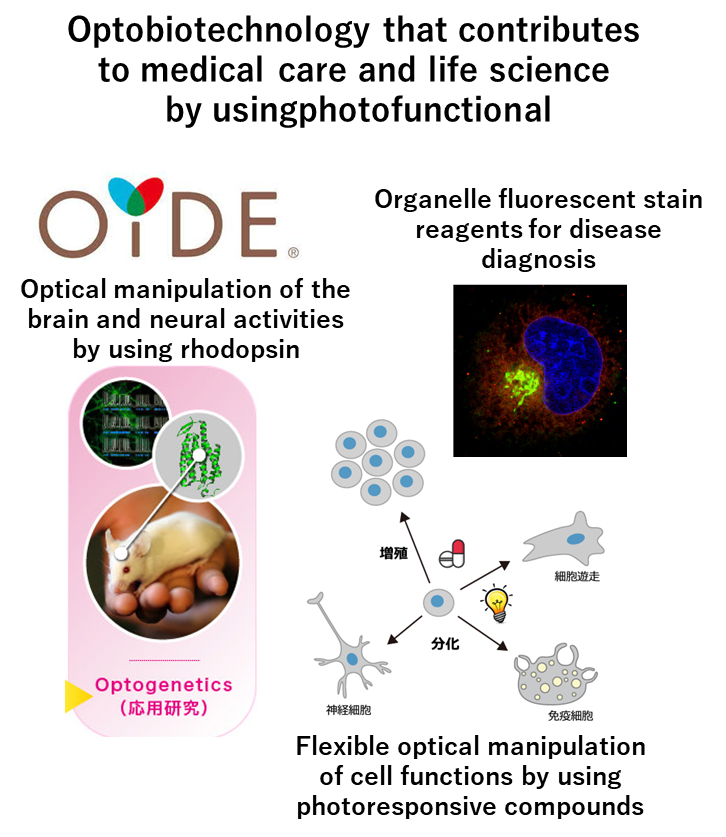Initiative - Next-generation medical and life science technologies achieved by photofunctional molecules
Category:News|Publishing : October 23, 2023
Aiming to create a global research center for studying "Light and Life" and develop human resources
Molecular technologies using light have attracted much public attention, such as "fluorescent imaging," which enables observation of molecules in living cells, and optogenetics, which achieves manipulation of the brain and neural activities.
In 2013, Nagoya Institute of Technology established the OptoBio Technology Research Center (Director: Professor Hideki Kandori) with the aim of contributing to creation of novel disciplines and industries by creating and utilizing "photofunctional molecules" from an engineering viewpoint.
Notably, in the field of optomedical technology, the center works on research related to optogenetics, phototherapy, optical cell manipulation, and optical diagnostics, and it has produced world-leading results, including the following:
〇 Research on practical application of highly active novel channelrhodopsins to treatment to restore vision (establishment of OiDE OptoEye, Inc.) [Kandori Lab];
〇 Development of novel intracellular organelle fluorescent stain reagents that contribute to diagnosis of diseases [Tsukiji Lab]; and
〇 Creation of photofunctional molecular technologies for optical manipulation of cell fate and functions [Tsukiji Lab].
The center aims to create a global base for research on "Light and Life" through the development of photofunctional molecules that contribute to the medical and life science fields and develop human resources who will serve as next-generation leaders.
OptoBioTechnology Research Center

The President of Friedrich-Alexander-Universität Erlangen-Nürnberg (FAU) visited NITech Open Campus 2023 Held in August!

 Japanese
Japanese